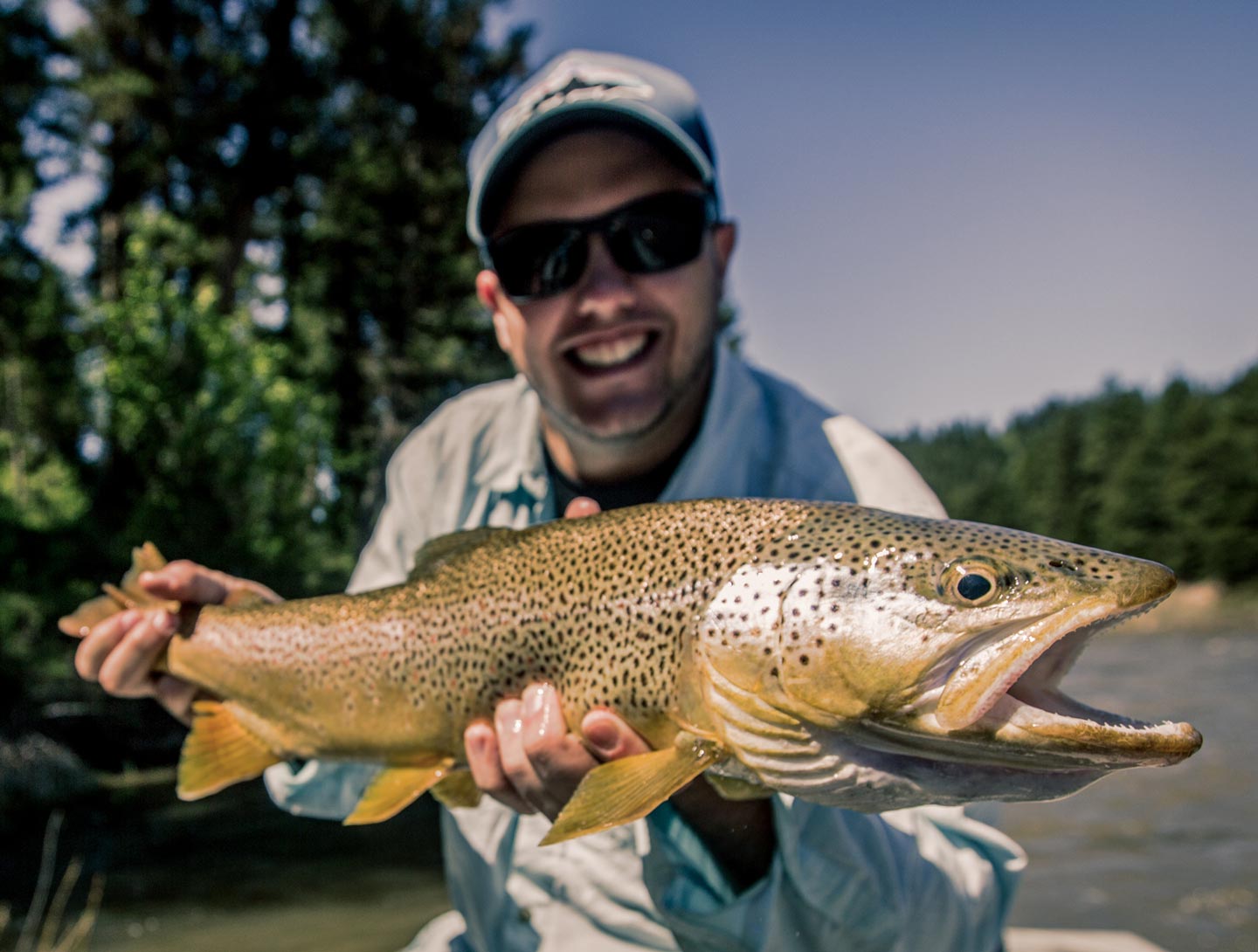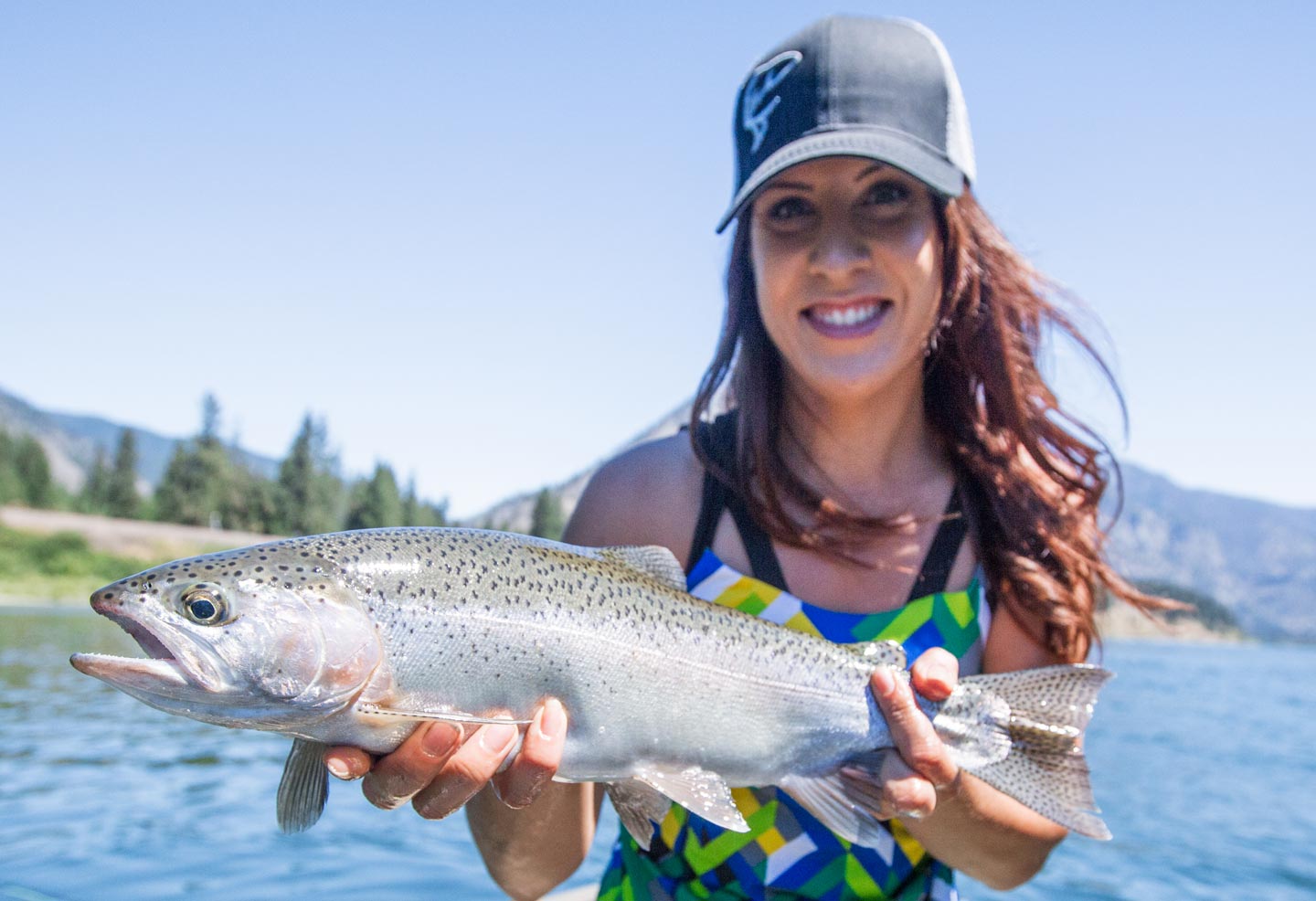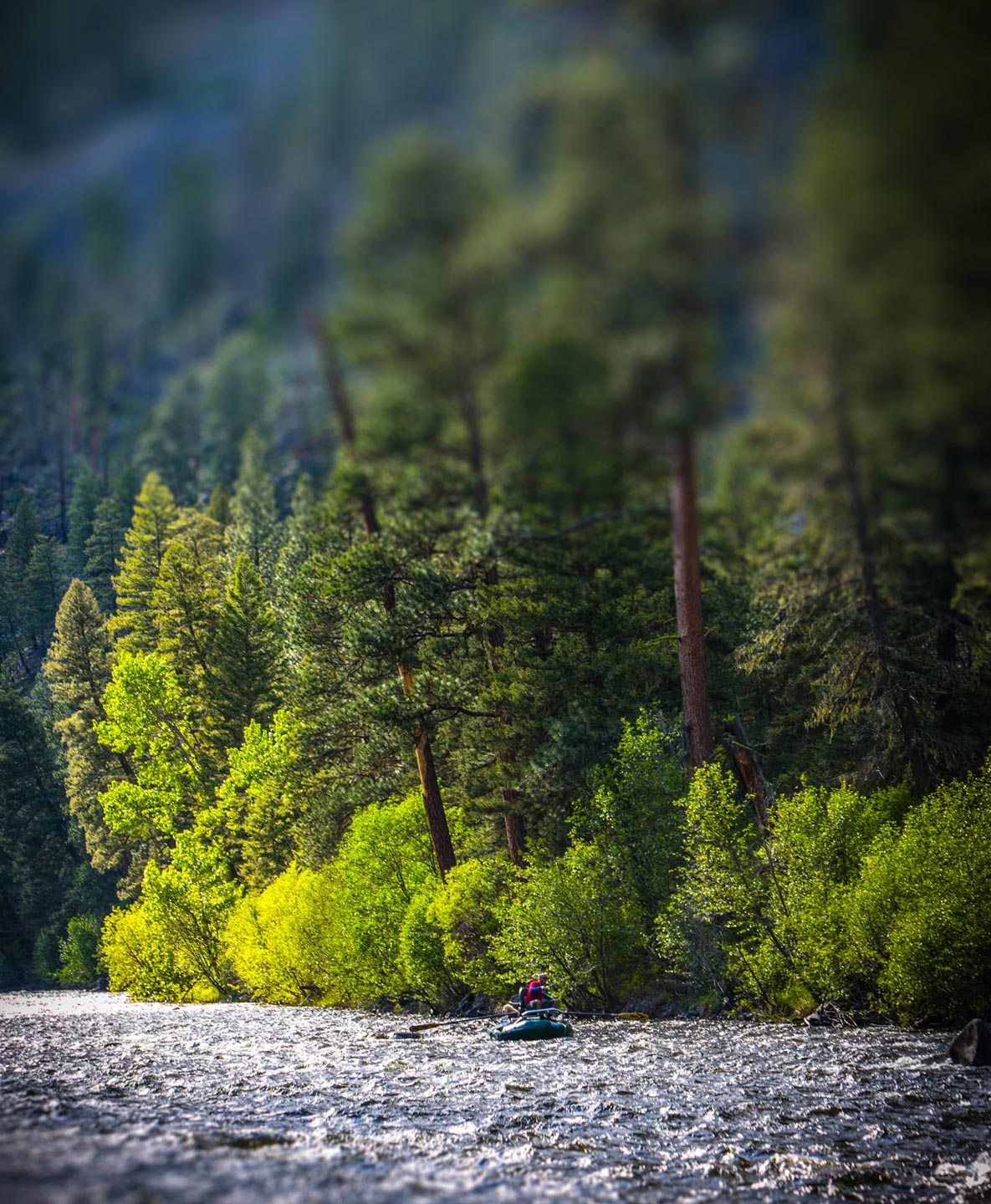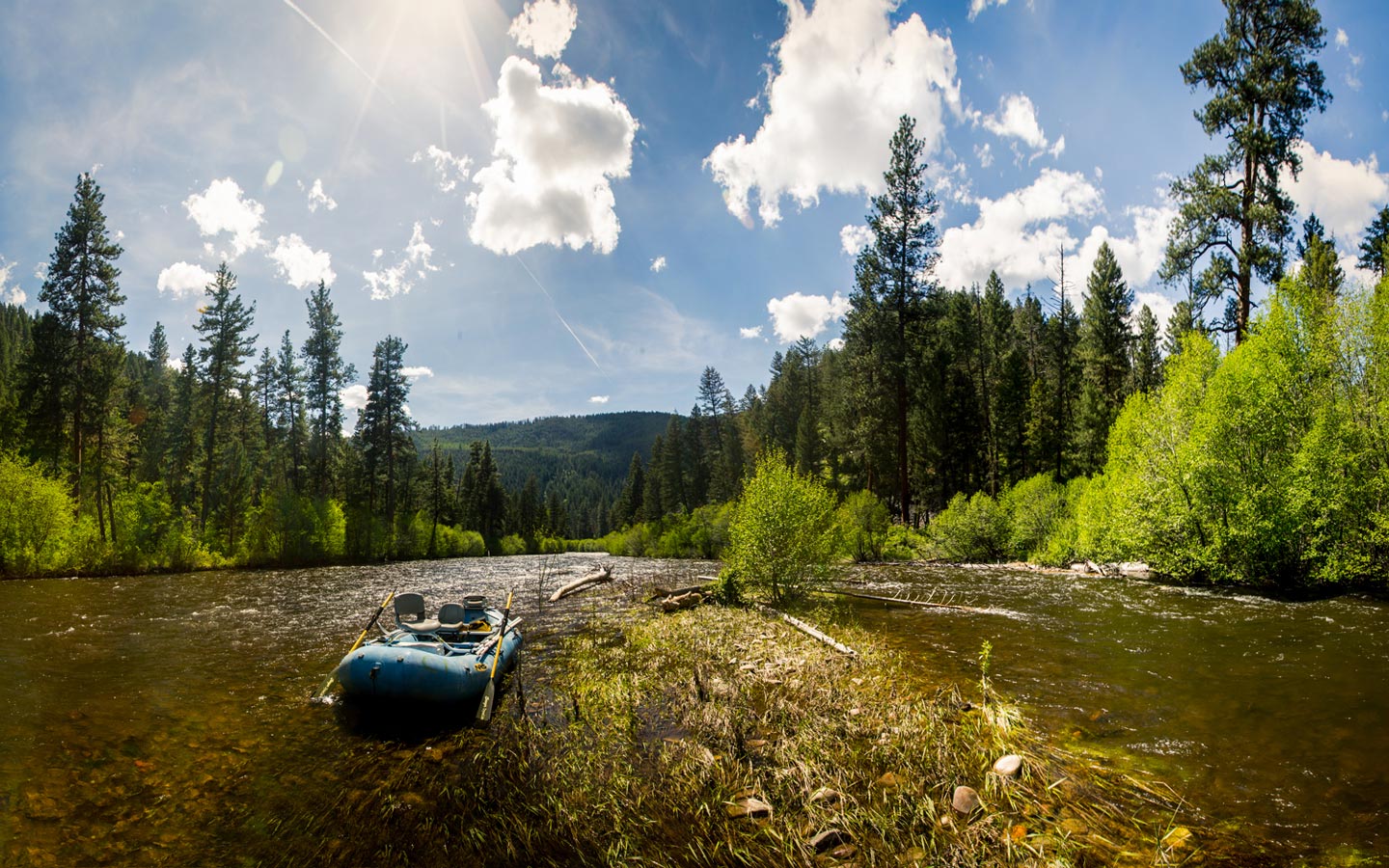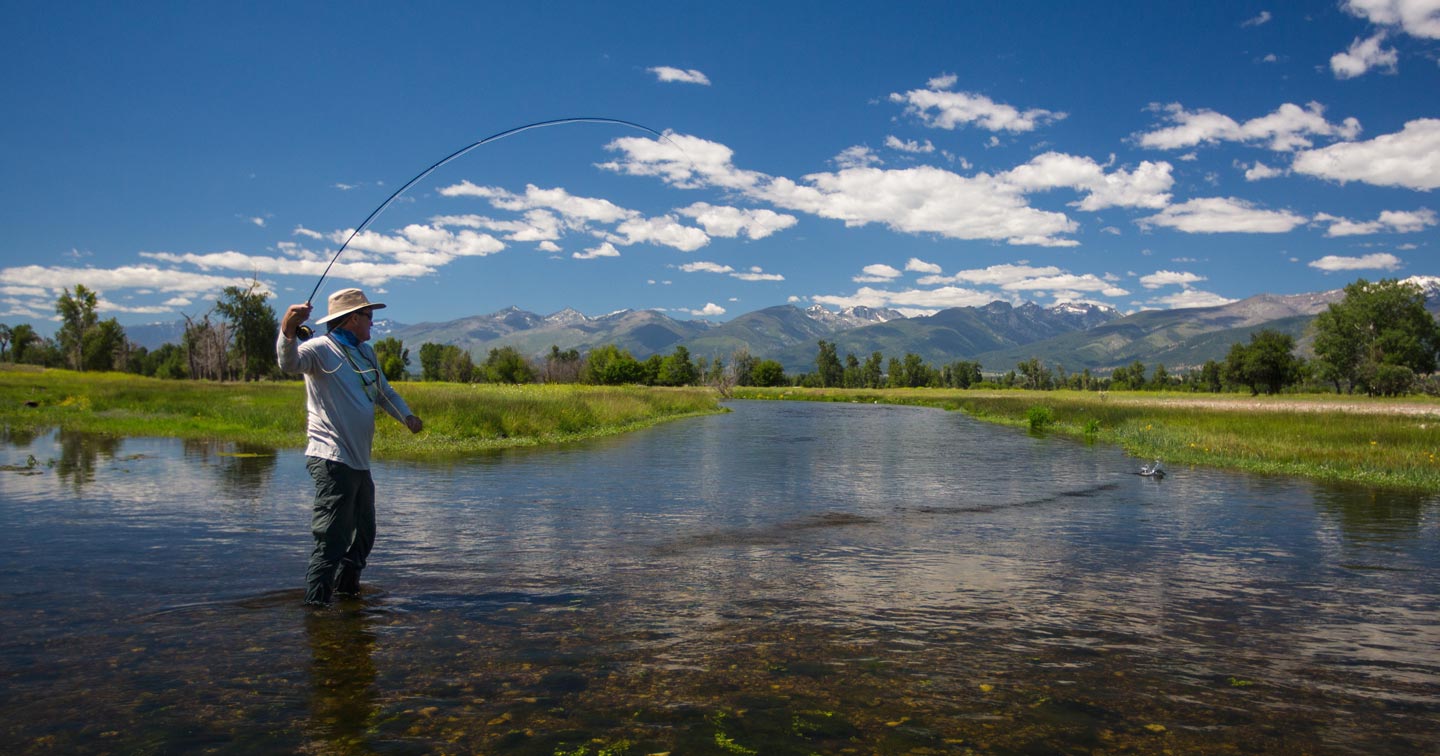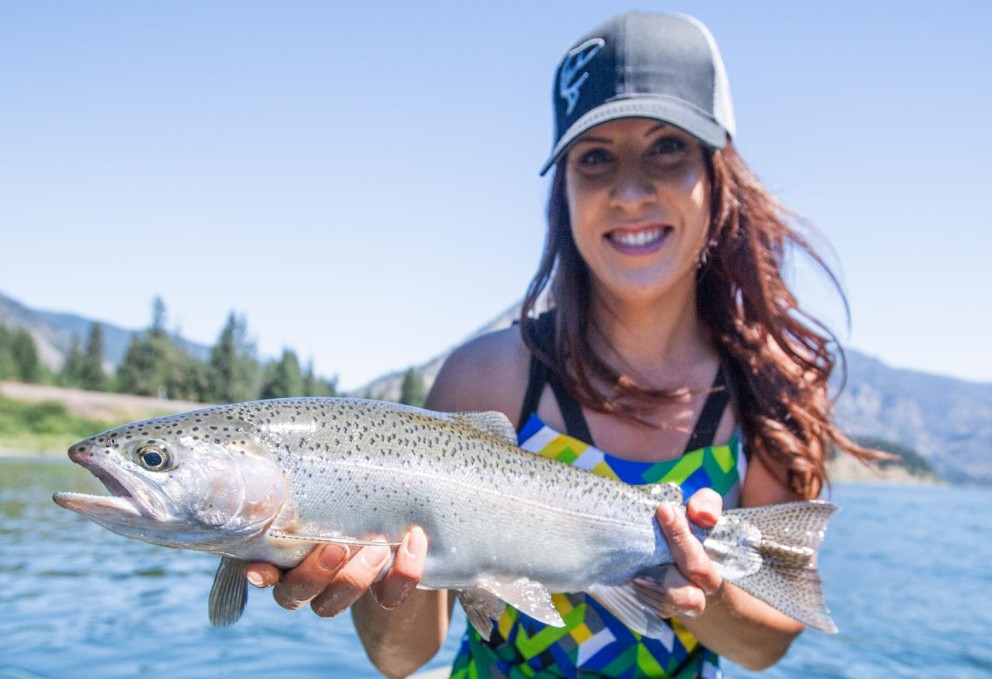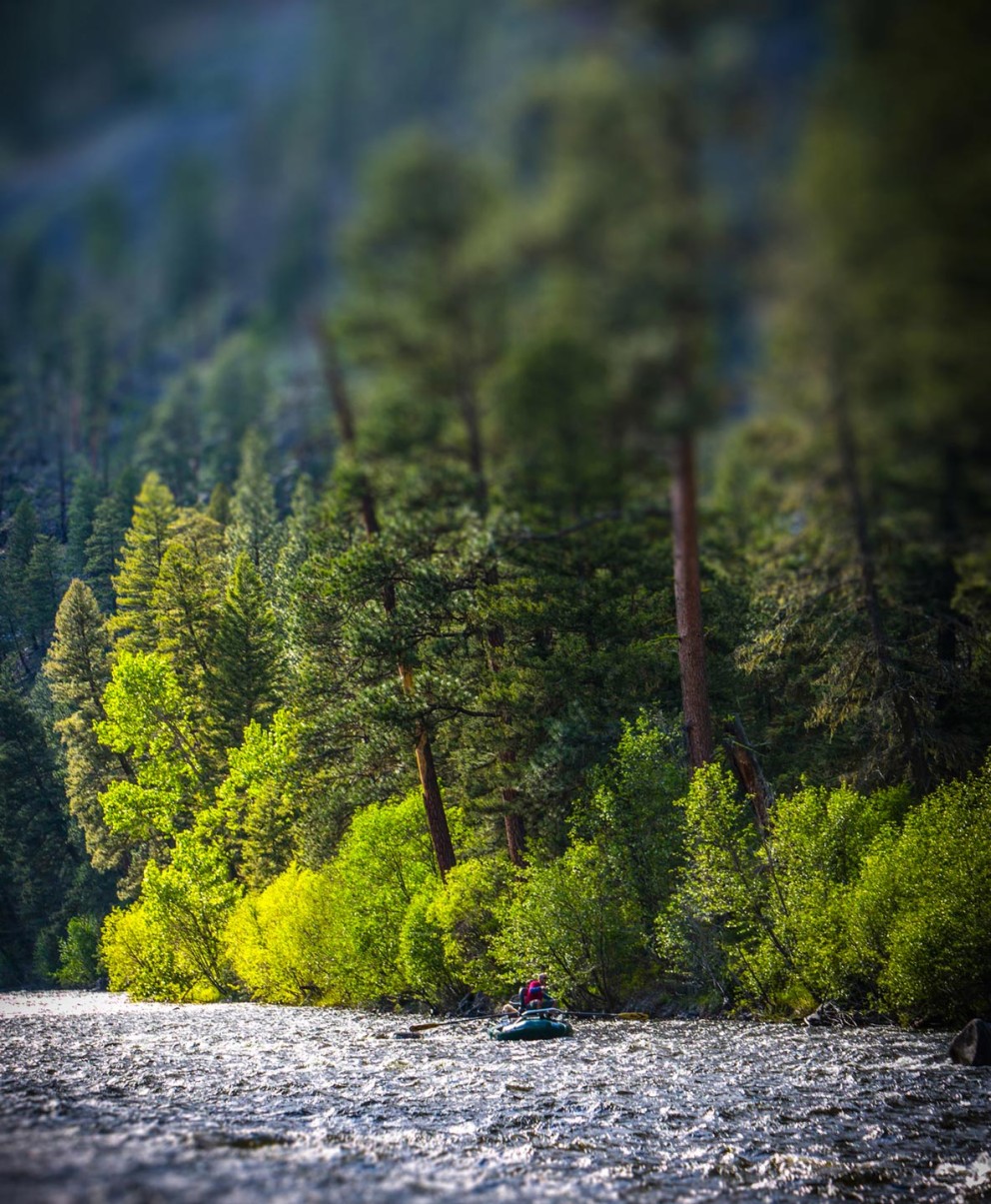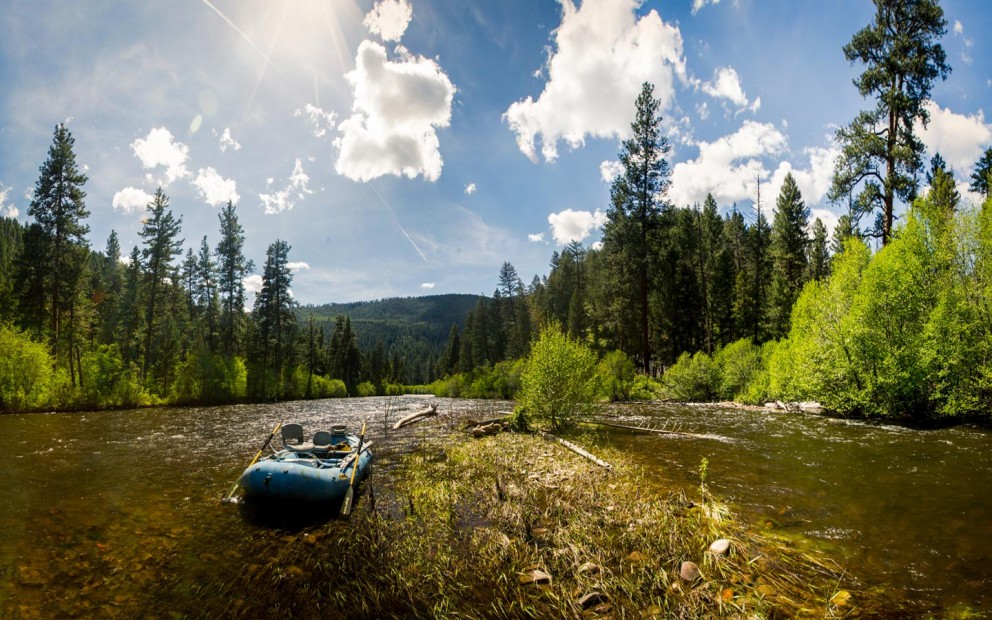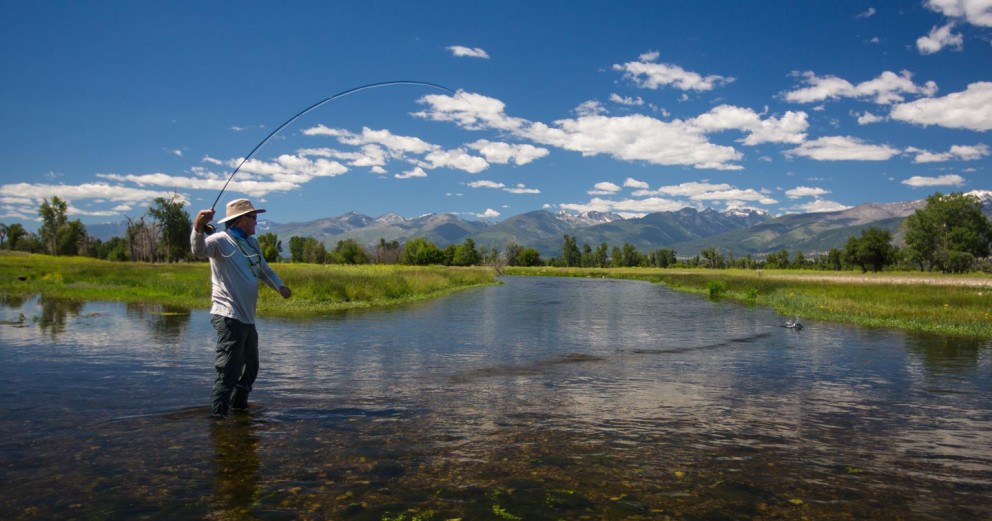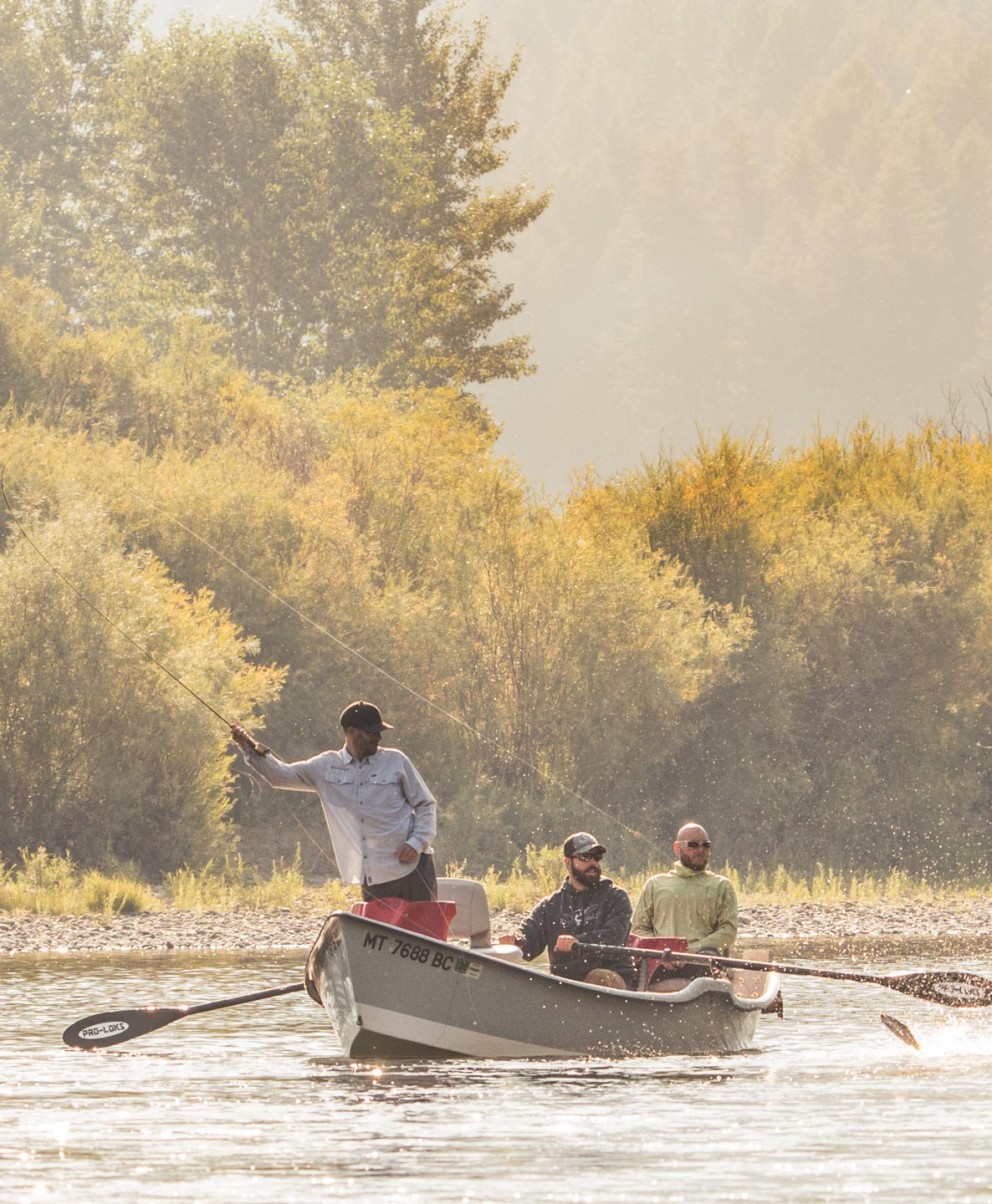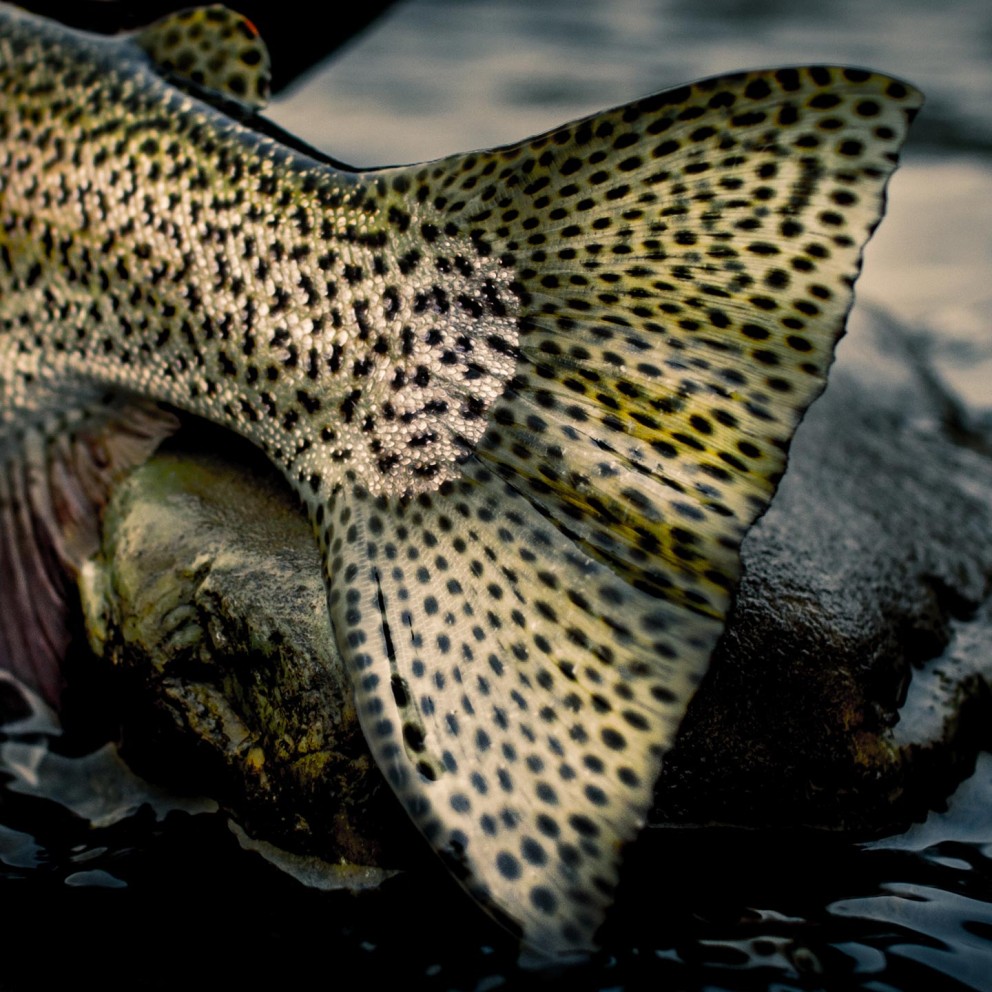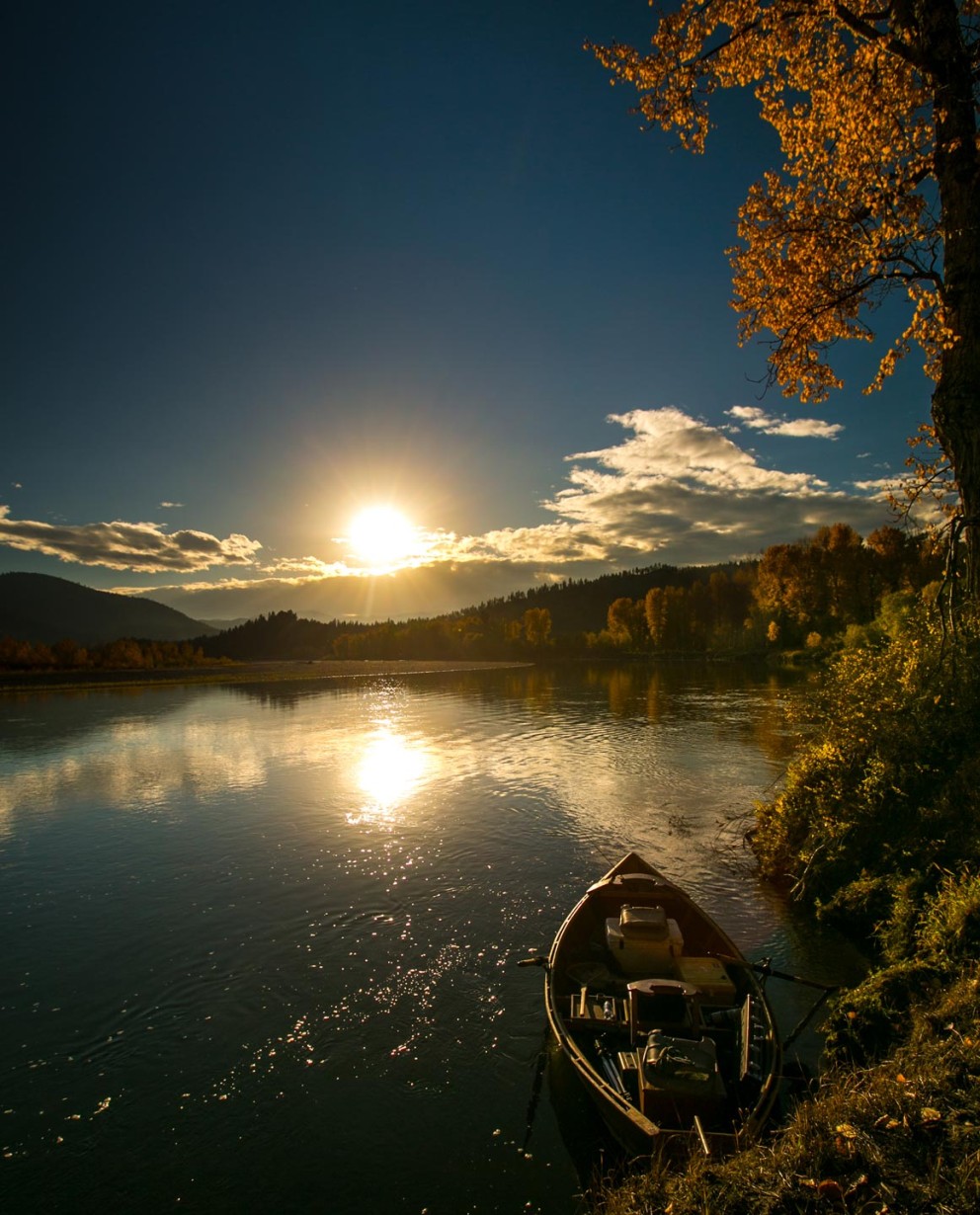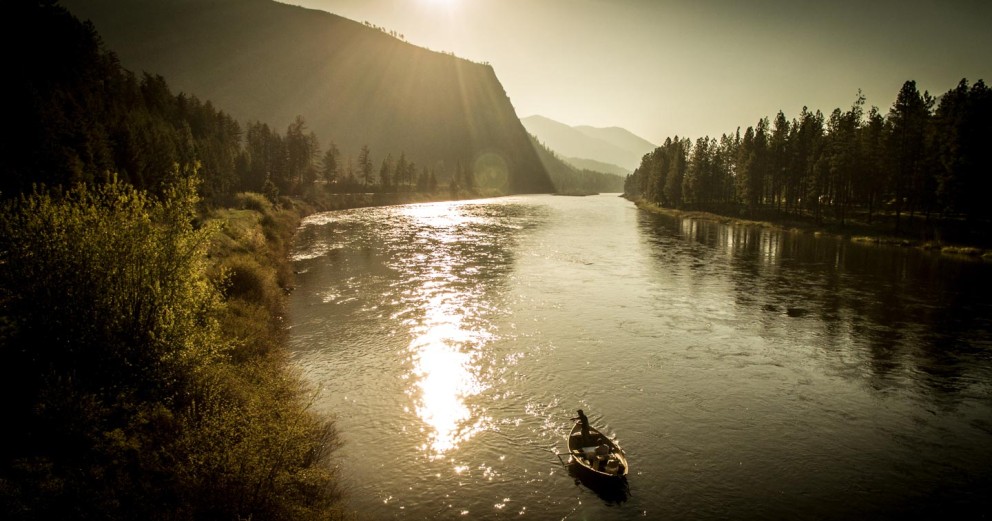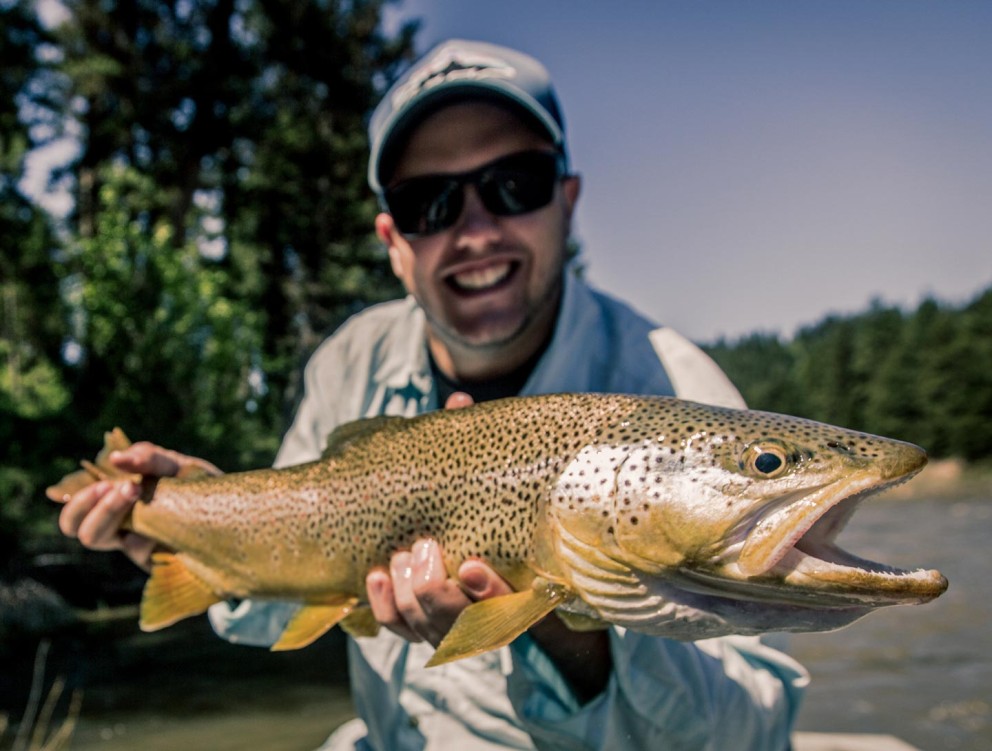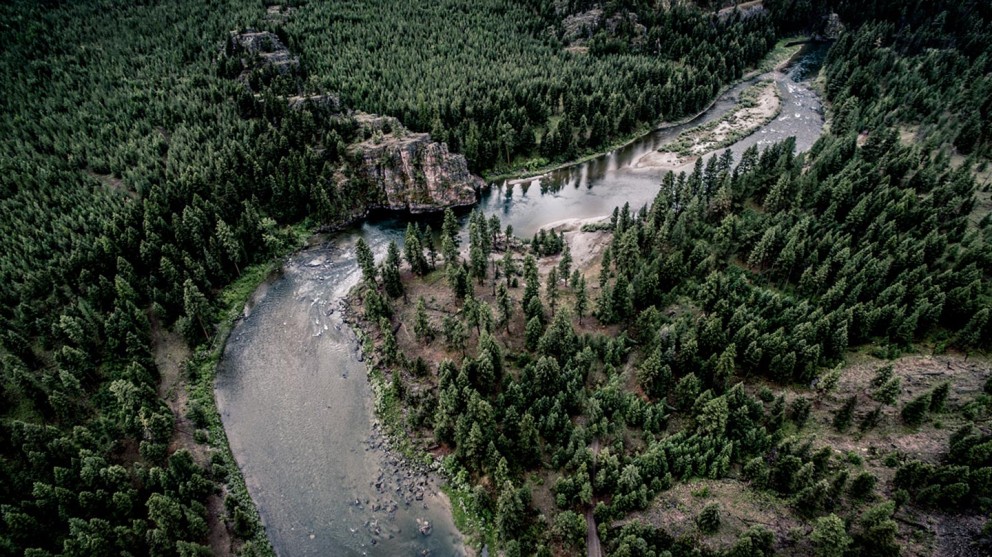Few places offer more trout fishing variety than the rivers and streams surrounding Missoula, Montana. And you won’t find a better collection of freestone streams in the Western United States. Rock Creek and the Bitterroot, Clark Fork, and Blackfoot rivers offer trout fishing the way nature intended—on freestone rivers carving through dense, wildlife-rich forests with the only fluctuations in flows determined by rain and snowmelt.
In addition, you won’t be casting at pellet-fed, stocked fish here—Montana’s rivers are home to exclusively wild, naturally reproducing rainbow and brown trout, along with native westslope cutthroat and bull trout. The average rainbow stretches between 12 and 20 inches; the average brown ranges between 14 and 20 inches; the average cutthroat goes 10 to 18 inches; and the average bull trout stretches from 18 inches to well beyond 30.
Bitterroot River: Perhaps the most scenic river in the area, this stream offers beautiful views of the Bitterroot and Sapphire mountains along with lots of great fish. The Bitterroot begins south of Missoula with the marriage of the East and West forks (each of which offer great fishing). The mainstem Bitterroot continues for 70 miles before merging with the Clark Fork just west of Missoula at Kelly Island. The ‘Root, as it’s often called, hosts about 2,000 wild trout per mile, ample numbers for a great day on the water. These are a mix of rainbows, browns, and cutthroats, and they grow to good size—it’s not uncommon to catch 17-inch representatives of each species, and nobody would doubt you if you got off the water at the end of the day and said, “I caught a 22 incher.”
The Bitterroot’s hatches are prolific and offer a variety of angling situations during all seasons. If you want to drift along and hit the banks with a foamy dry and a dropper you can do that. If you want to target large fish and strip streamers, you can do that. If you want to cast tiny dry flies to technical trout sipping tricos off a flat-surfaced backwater, you can do that, too.
Clark Fork River: The Clark Fork can be intimidating to novice anglers—in the sections downstream from Missoula, before its confluence with the Flathead River, the Clark Fork is broad and strong with some major rapids that demand a guide’s attention to the oars. But between those sections are long, glassy glides, highlighted by braided channels, foam-lined eddies, seductive side channels, and long, grassy banks. The trout through this stretch are large and challenging but a well-presented fly will often do the trick. However, light tippets and small flies are sometimes mandatory.
The Upper Clark Fork above Missoula is a far different river. Lots of brown trout mix with rainbows and a few cutthroats as the higher sections the river runs through grassy pastures with deep cutbanks and pools—places where trout beyond 5 pounds are known to lurk. Below the mouth of Rock Creek, just 20 miles from Missoula, the Clark Fork has a classic freestone look with lots of riffles, definitive runs, and plunge pools. Anglers catch variety here, with some big rainbows and browns in the mix.
Rock Creek: What’s not to like? This small, steep freestone stream flows through a 60-mile wilderness corridor and offers wild trout throughout. These are mix of rainbows, browns, and cutthroats, with some brookies and bulls, and although they don’t run as large as you might find on the Clark Fork, Blackfoot, or Bitterroot, 18- to 20-inchers are entirely possible. This is a walk-and-wade fisher’s paradise where dry fly and nymph tactics hold equal appeal. When you’re looking for incredible canyon scenery, lots of wildlife sightings, and solid daily numbers of trout, Rock Creek is the place to be.
Blackfoot River: The Lower Blackfoot meets the Clark Fork 5 miles east of Missoula. Good fishing for browns, rainbows, and cutthroat extends upriver for 70-some miles. The average fish here measures 14 to 16 inches long, but know that much larger fish exist. Any given cast could bring up a 25-inch brown or ‘bow—or a 35-inch bull trout. You can’t deliberately target bull trout, but they do prefer the same streamers you’ll throw for rainbows and browns. If you do tangle with one of these protected char, make sure to fight it fast, keep it in the water for photos, and release it quickly.
Much of the Blackfoot runs beneath stunning canyon walls, providing pleasingly diverse scenery. And the hatches bring fish up in all of those places. Blue-winged olives are abundant on the Blackfoot, and the skwalas comes off in good numbers, too. You can find March browns, midges, and stoneflies as well. But maybe the most exciting way to fish the Blackfoot is with streamers when the water turns to beautiful green—not really clear but not blown out either. Fish can find your fly easily enough, and they aren’t too shy because that color in the water gives them mega-confidence. If you want to catch a large trout in the Missoula area, the Blackfoot during spring time, when water conditions allow, is the place to be.
You can fish the Blackfoot by wading the banks, but in many places it’s steep and rocky, and wading is a challenge. It’s best to let a guide pull the oars while you and a buddy or a spouse or kid cast from the bow and stern, working those Sparkle Minnows, Buggers, and Sex Dungeons along the banks, teasing big browns and massive bull trout out of the boulders and into the net.
Boats and Equipment
Missoula River Lodge guests fish out of a variety of boats, including super stable McKenzie-style drift boats and fiberglass skiffs. When floating Rock Creek or one of the Clark Fork’s whitewater sections, guides may use rafts with fishing frames.
